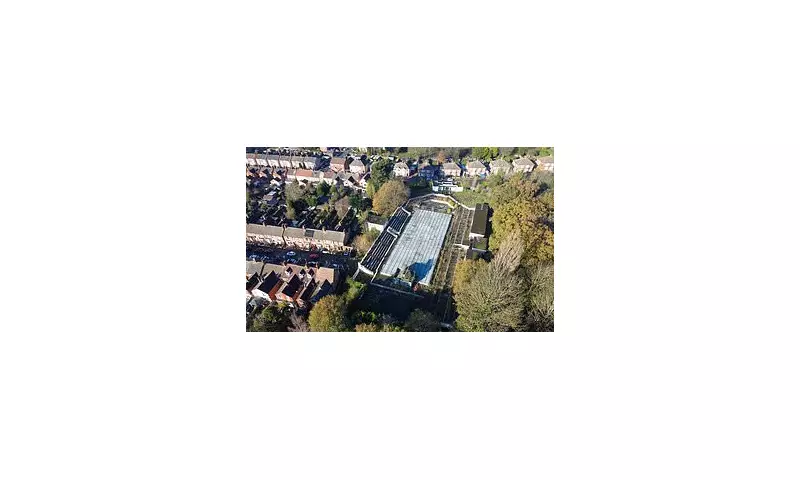
Britain is witnessing a remarkable resurgence in outdoor swimming as communities battle to restore the nation's historic lidos to their former glory. These iconic open-air pools, which first flourished during the 1930s Art Deco era, are experiencing what enthusiasts have dubbed a 'lido renaissance' after decades of decline.
The Golden Age and Sudden Decline
The 1930s represented the golden age for British lidos, with more than 160 outdoor pools appearing across the country. Adorned with elegant Art Deco pavilions, water fountains and diving boards, they offered families an escape from the Great Depression and reflected a growing interest in continental glamour and public health improvement.
This boom was short-lived however, as local council funding cuts combined with the rise of budget foreign holidays sent these community hubs into rapid decline. Many lidos closed their gates forever, while others fell into disrepair, becoming frozen in time until recent restoration efforts began.
Community Battles for Restoration
Across the UK, determined community groups are leading the charge to bring these abandoned pools back to life. Funding from The National Lottery Heritage Fund, grants and local fundraising campaigns has enabled millions to be invested in restoration projects, though success has been mixed.
In London, the lido revival has been particularly dramatic, with popular spots like London Fields, Tooting and Brockwell Lidos becoming so crowded during summer months that booking a swimming slot has been described as a 'bloodbath' and crowded lanes are commonplace.
Broomhill Pool: A 23-Year Struggle
The story of Broomhill Pool in Ipswich, Suffolk exemplifies both the passion and challenges facing lido restoration projects. This Grade Two listed Art Deco facility opened in 1938 and was once the joint deepest public outdoor pool in the UK at 15 feet deep. During its heyday, it attracted 2,000 swimmers daily in the 1970s and 80s before closing in 2002.
The Broomhill Pool Trust has been fighting for 23 years to reopen the facility, securing a £3.8 million National Heritage Lottery Fund grant in 2018. However, the project has faced multiple setbacks including pandemic delays and funding withdrawals after potential operators couldn't provide financial assurances.
Local residents remain divided about the pool's future. While supporters point to health benefits and community value, neighbours worry about parking problems and noise. Retired electrical engineer Les Mason, 88, who lives opposite the pool, expressed concerns that 'parking is such a problem around here' and questioned whether the council could afford the millions needed for restoration.
Tynemouth's Crumbling Seaside Gem
Further north in North Tyneside, Tynemouth Lido presents another restoration challenge. The once-elegant art deco swimming pool built in the 1920s now stands as a crumbling shell battered by North Sea winds. After closing in the 1990s, the council spent £200,000 demolishing its buildings and bulldozed rubble into the empty pool.
The Friends of Tynemouth Outdoor Pool group formed in 2012 to save the site from being concreted over and secured planning permission in 2023. However, with restoration costs estimated at around £10 million, progress has stalled. Local resident Stephen Hull, 76, who fondly remembers skipping work to visit the lido in its prime, described the current situation: 'It's just an absolute mess at the moment. It would take someone local like Sting, and social media to raise that kind of money.'
Restoration Successes and Failures
Not all restoration attempts have ended in limbo. Jubilee Pool in Penzance, Cornwall stands as one of the most successful examples of lido revival, having been beautifully restored and now operating as a thriving community facility.
Meanwhile, Grange Lido in Cumbria represents a promising ongoing project. One of only four remaining listed coastal lidos in England, the 50-metre open air pool built in 1932 could reopen next year following a £6.8 million restoration project that began in April 2023.
However, the restoration journey has proven treacherous for some. Cleveland Pools in Bath, Britain's oldest lido dating back to 1815, reopened in September 2023 after 20 years of campaigning and £9.3 million in funding, only to close within four months when its supposedly 'waterproof' plant room flooded during a storm. The project now faces an uncertain future, with the Trust warning it might never reopen without additional funding for repairs.
The Future of Britain's Lidos
The lido renaissance continues to gather momentum despite the challenges. As outdoor swimming regains popularity, these historic pools represent not just recreational spaces but important cultural heritage. The success of restoration projects increasingly depends on balancing community enthusiasm with practical considerations about location, funding sustainability, and local infrastructure.
The struggle to save Britain's lidos highlights broader questions about preserving public leisure facilities and adapting historic infrastructure for modern use. As communities from Ipswich to Tynemouth continue their campaigns, the fate of these iconic swimming pools remains intertwined with local identity, public health priorities, and the changing nature of British leisure time.





